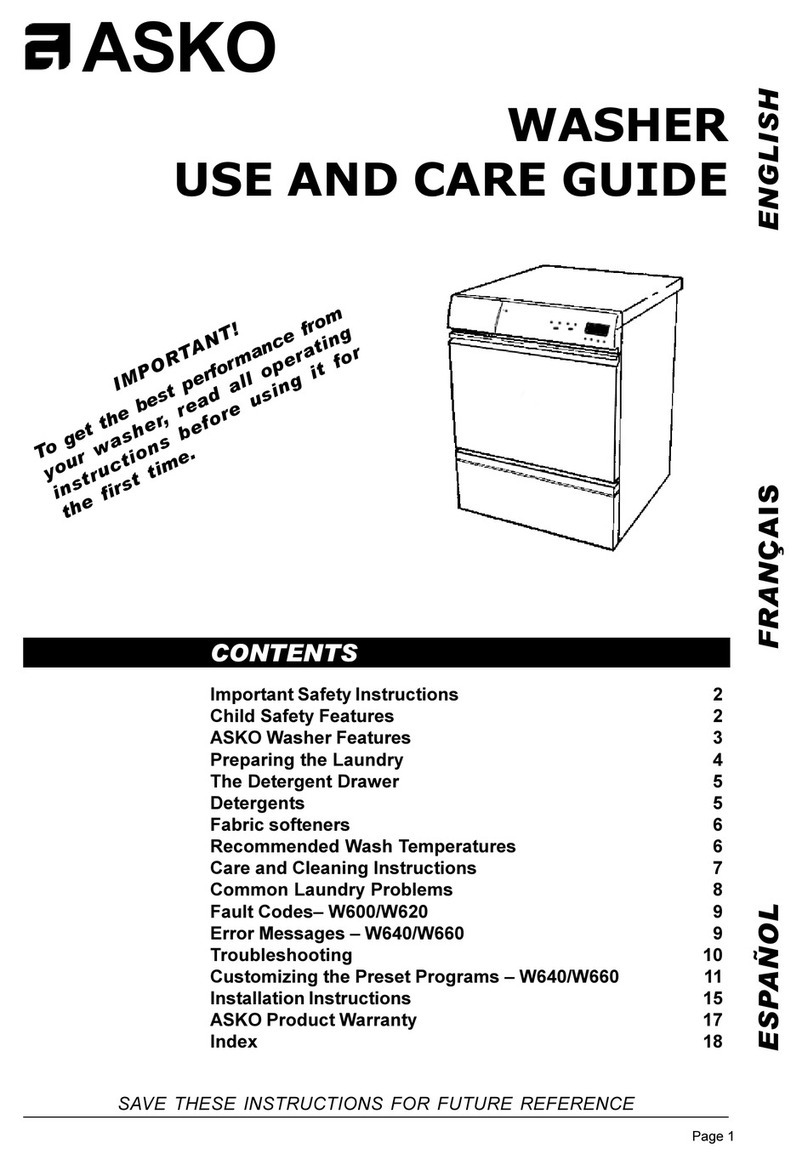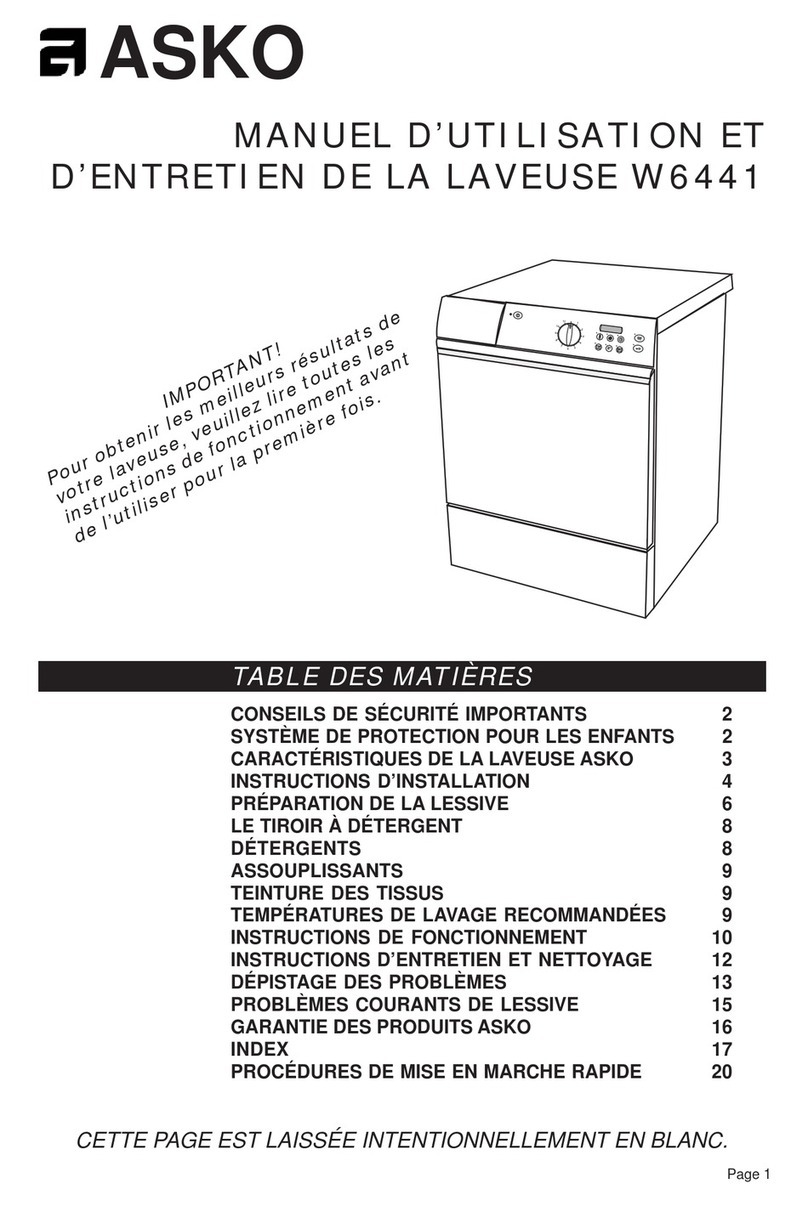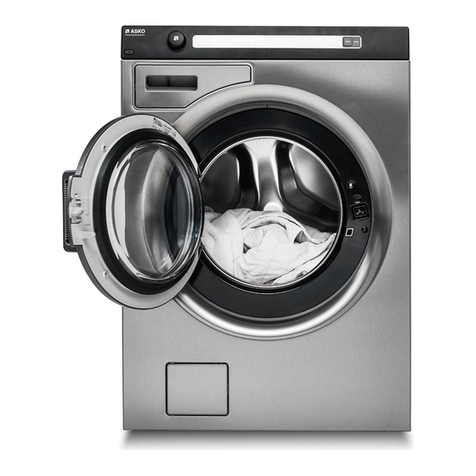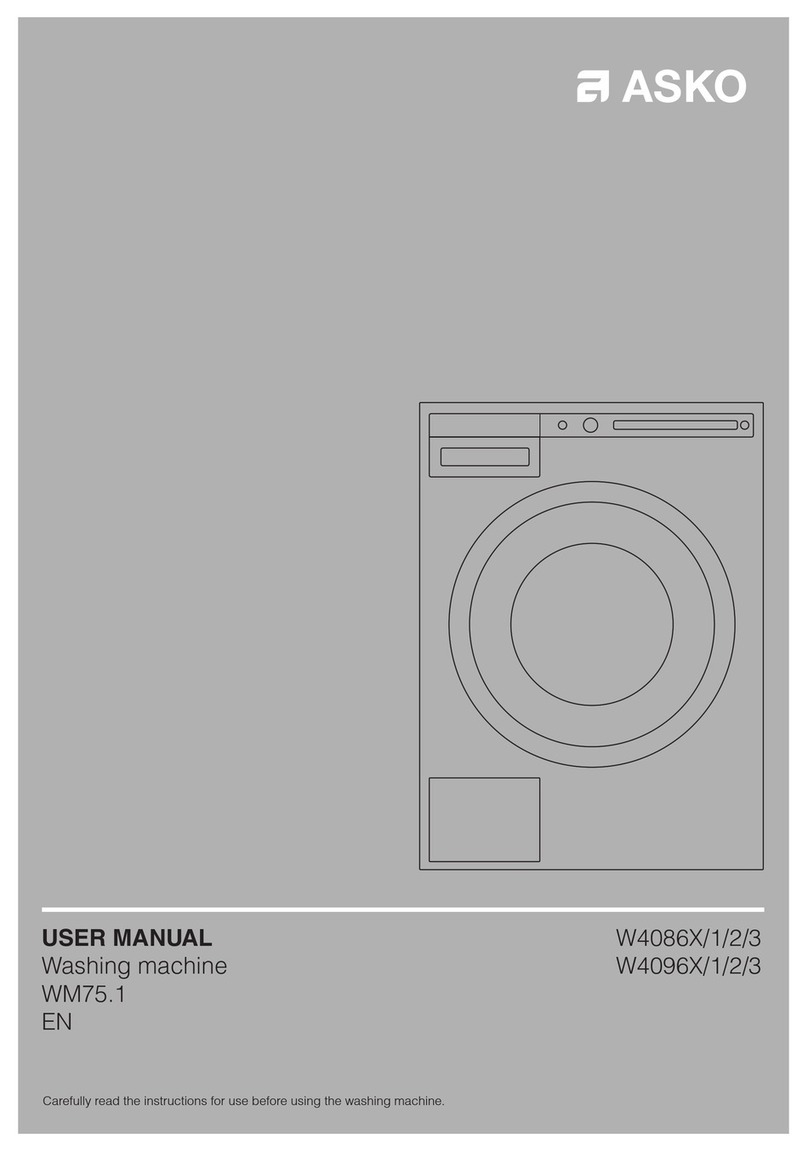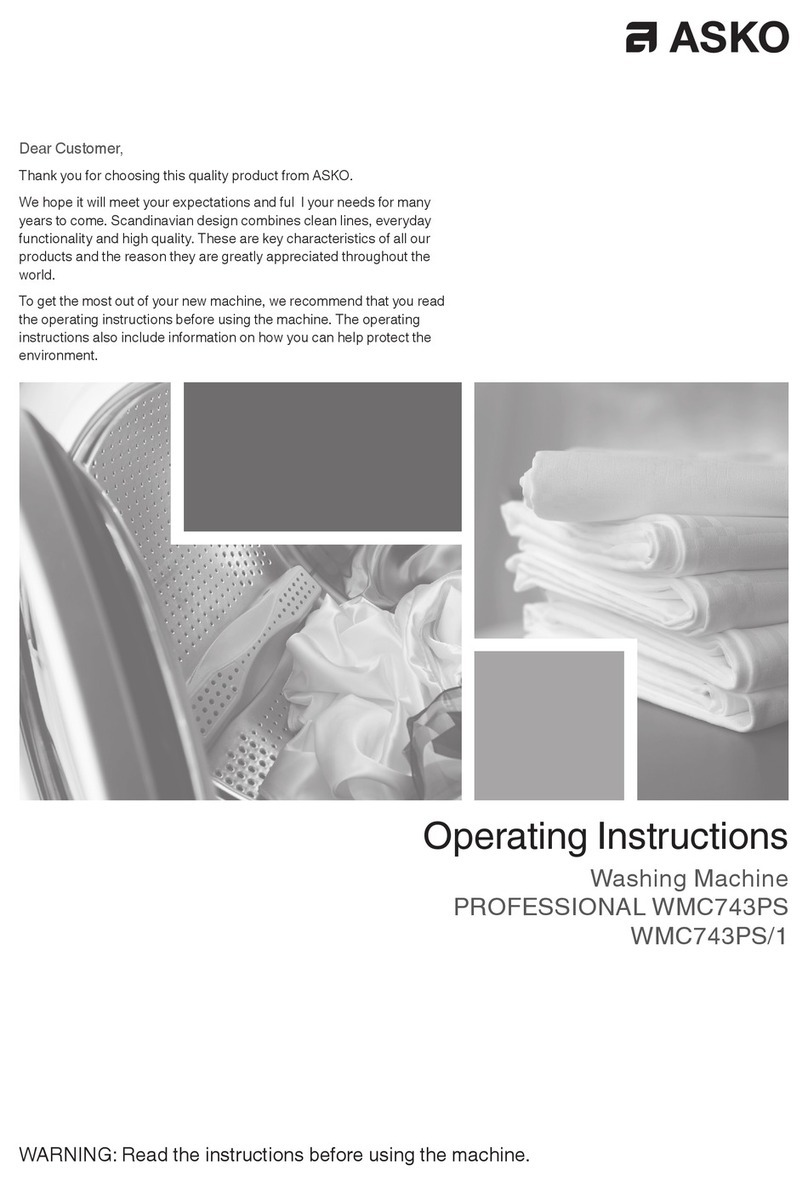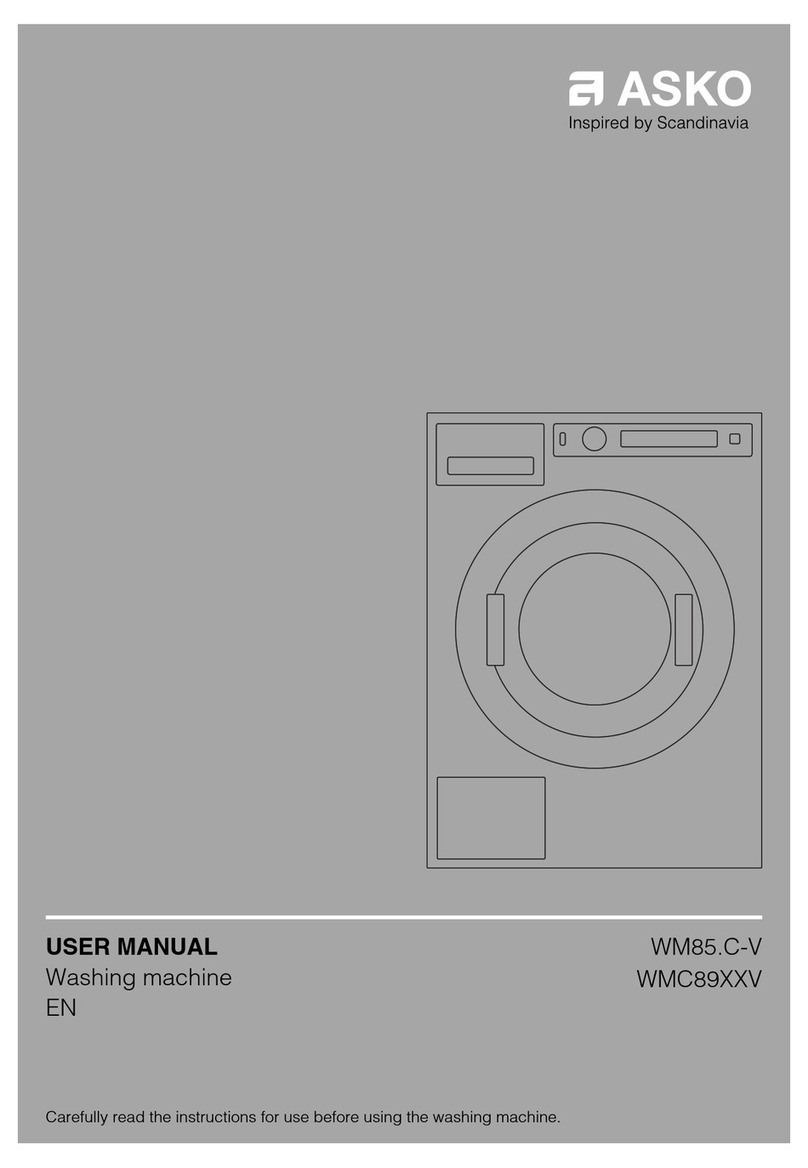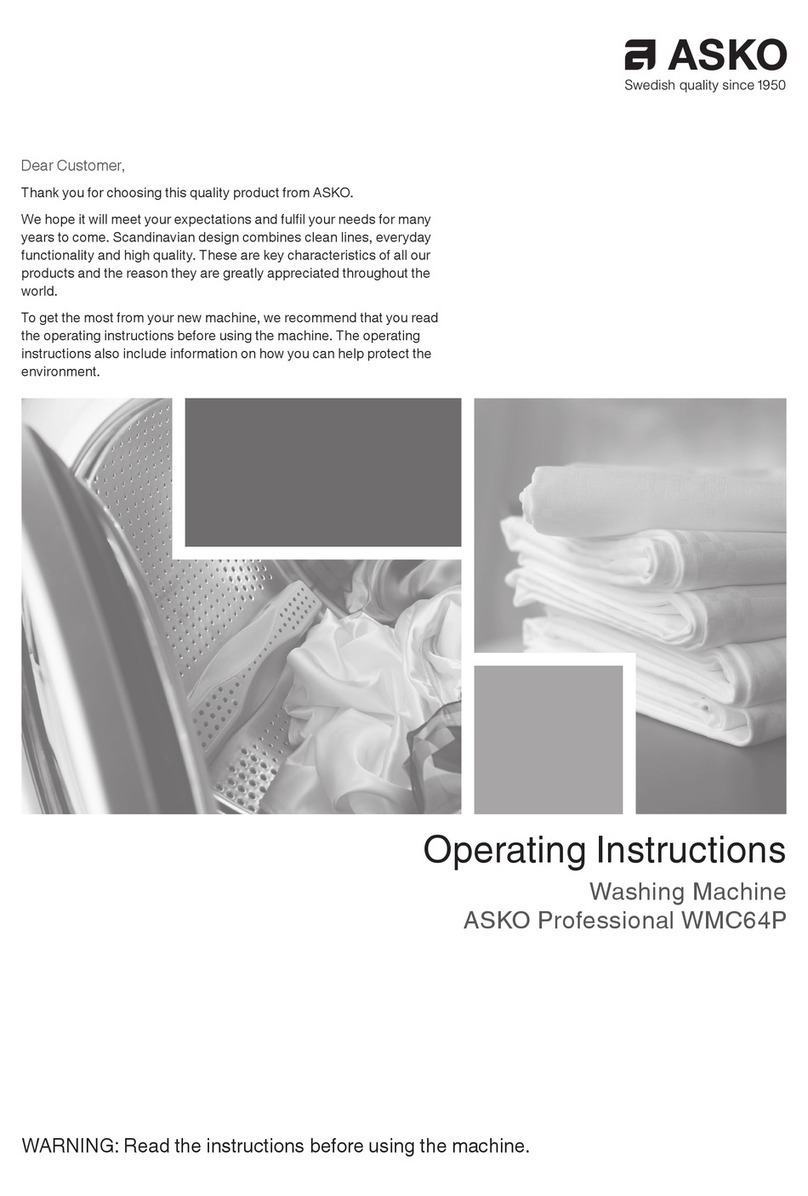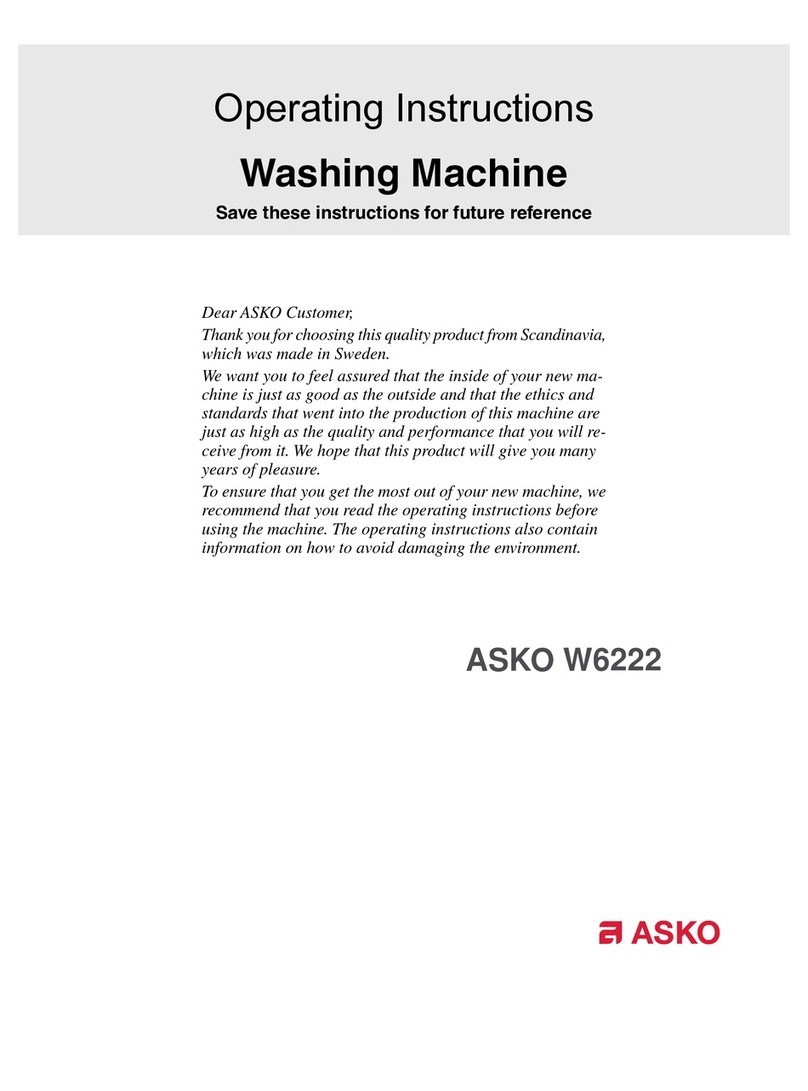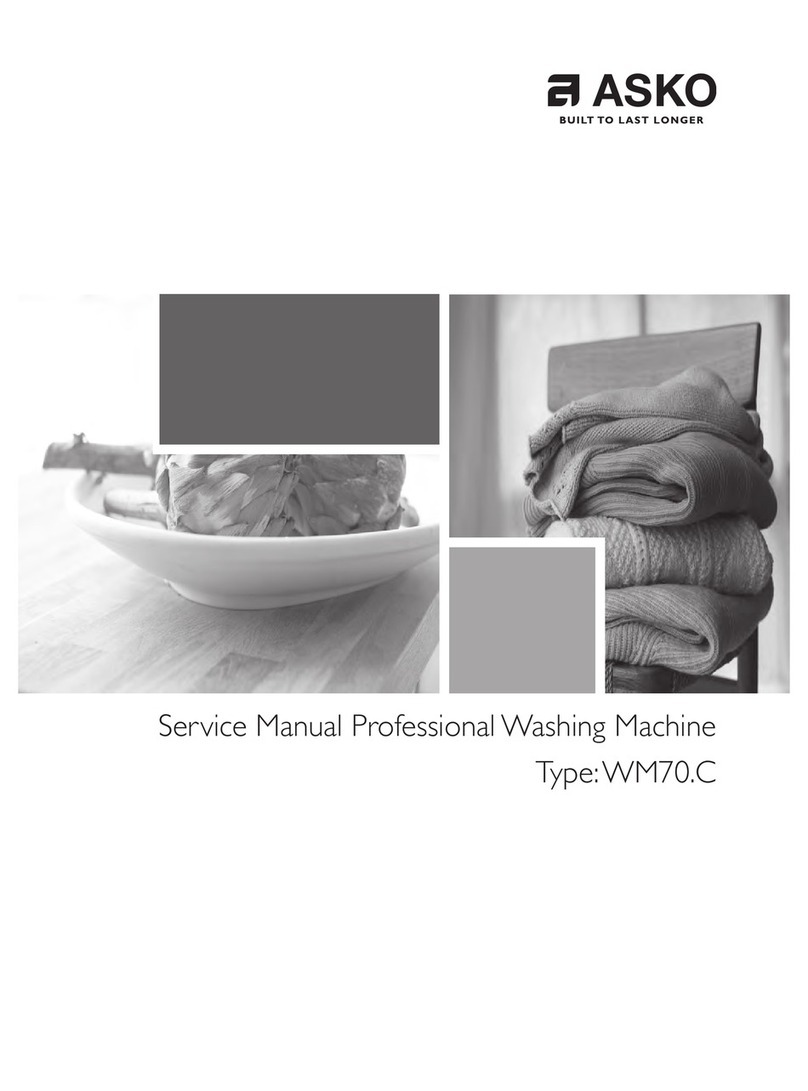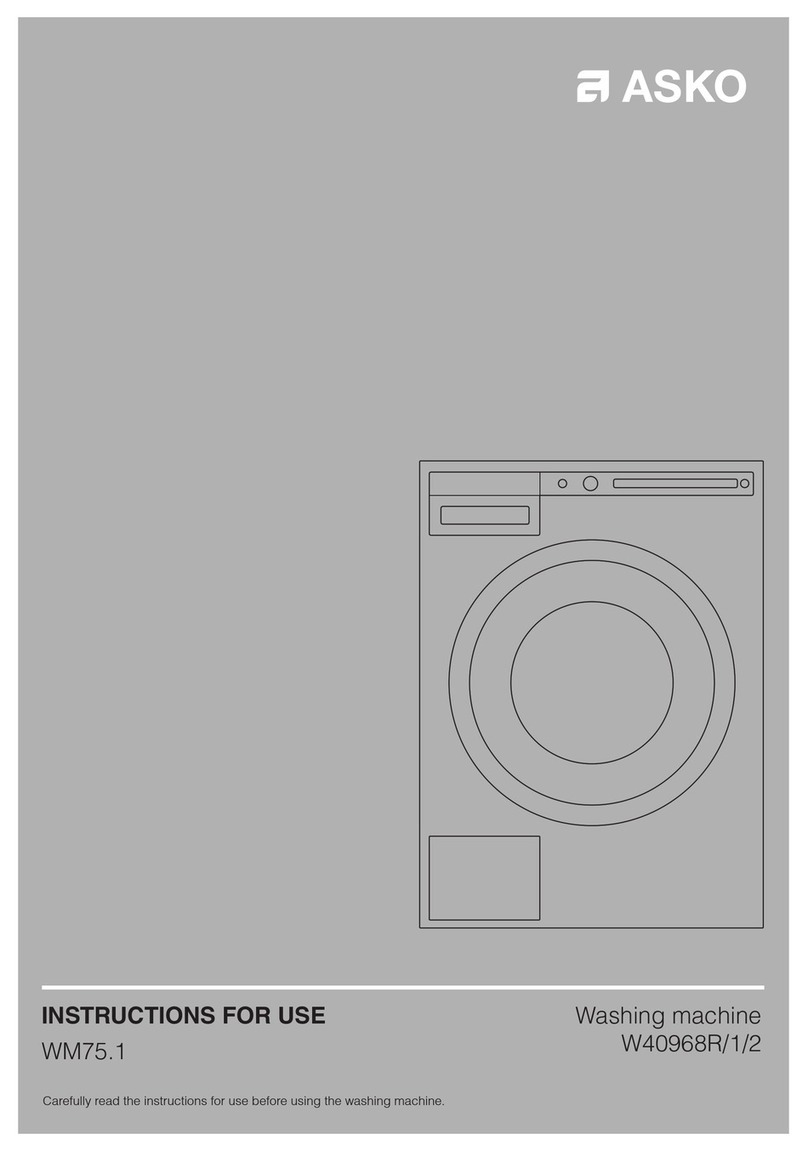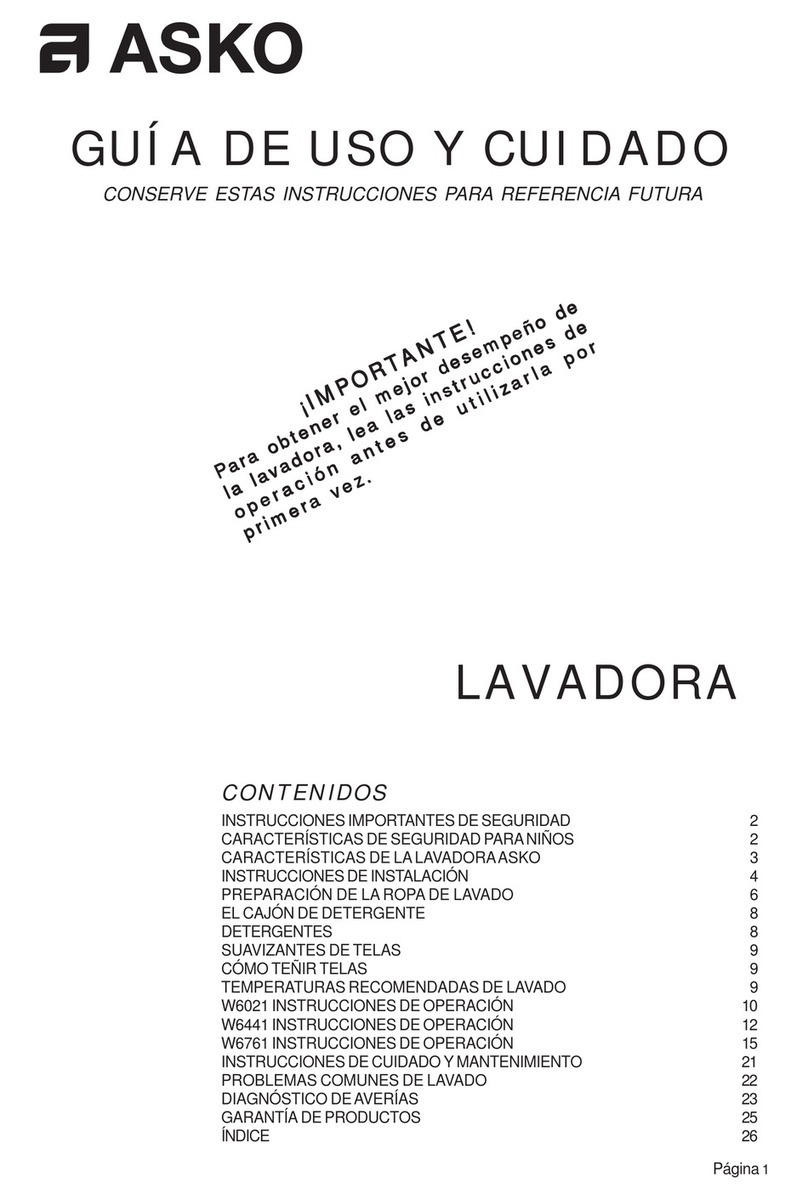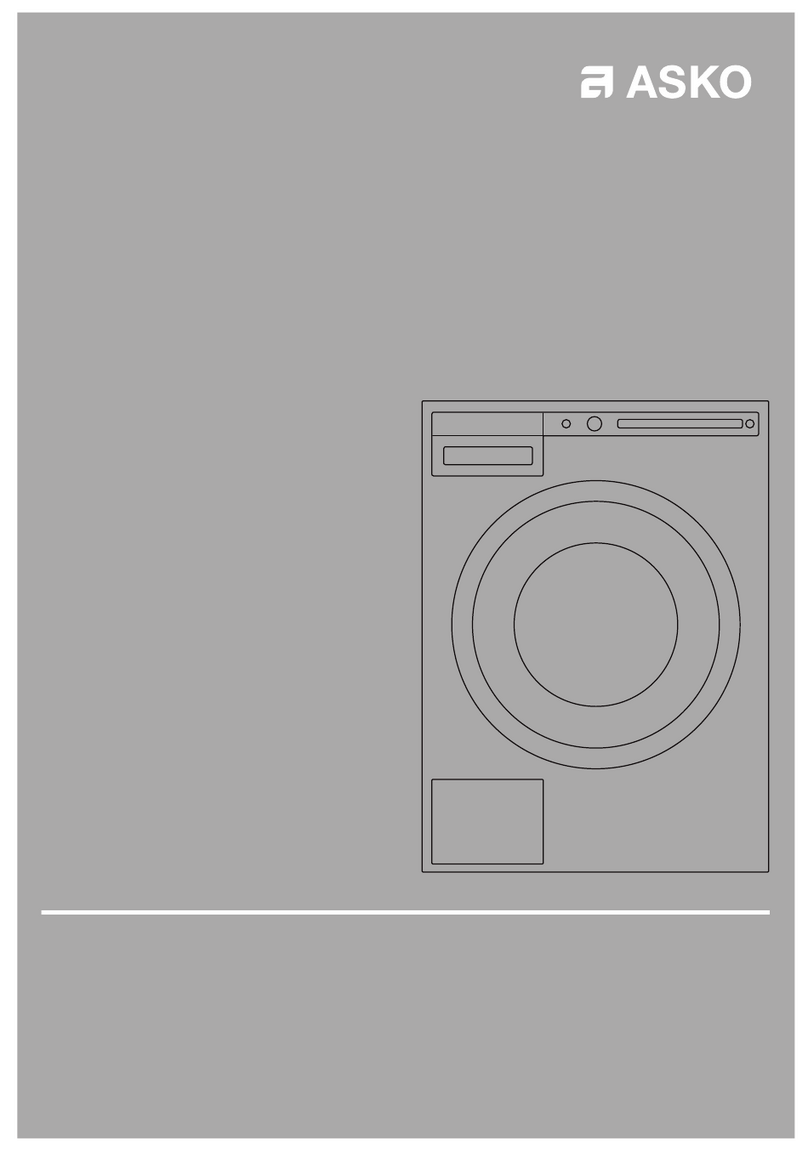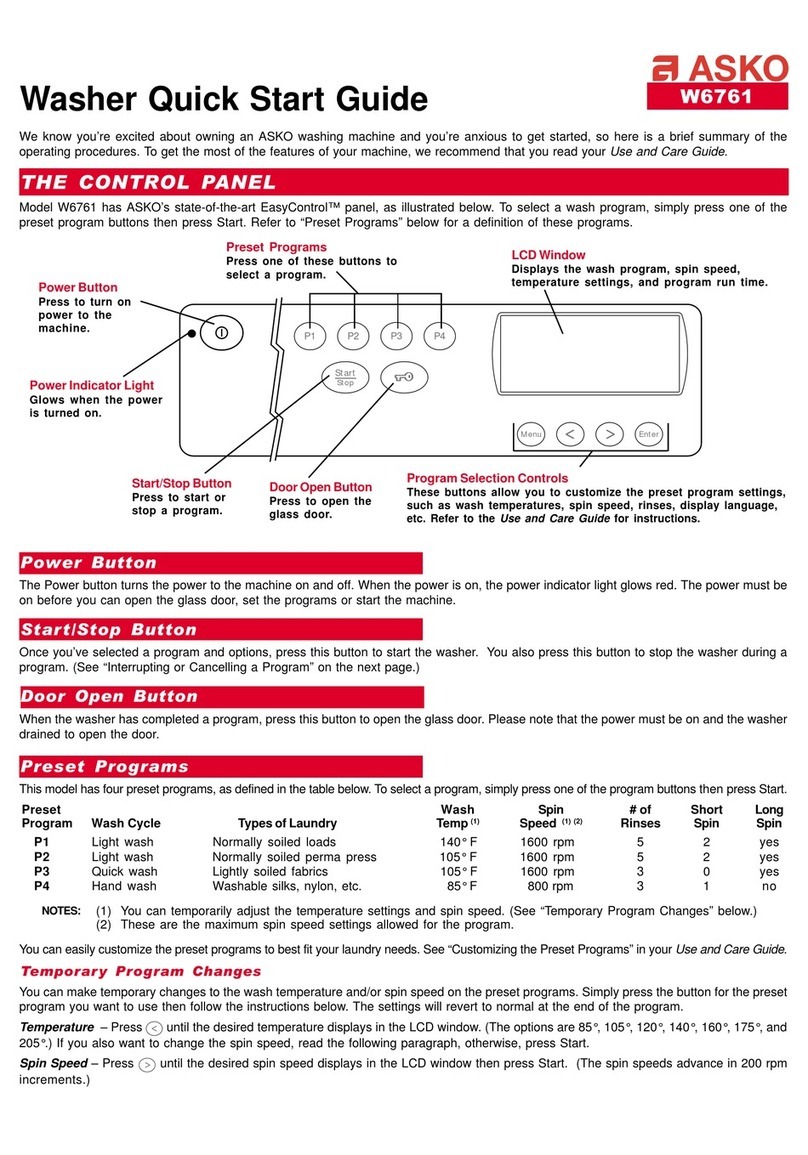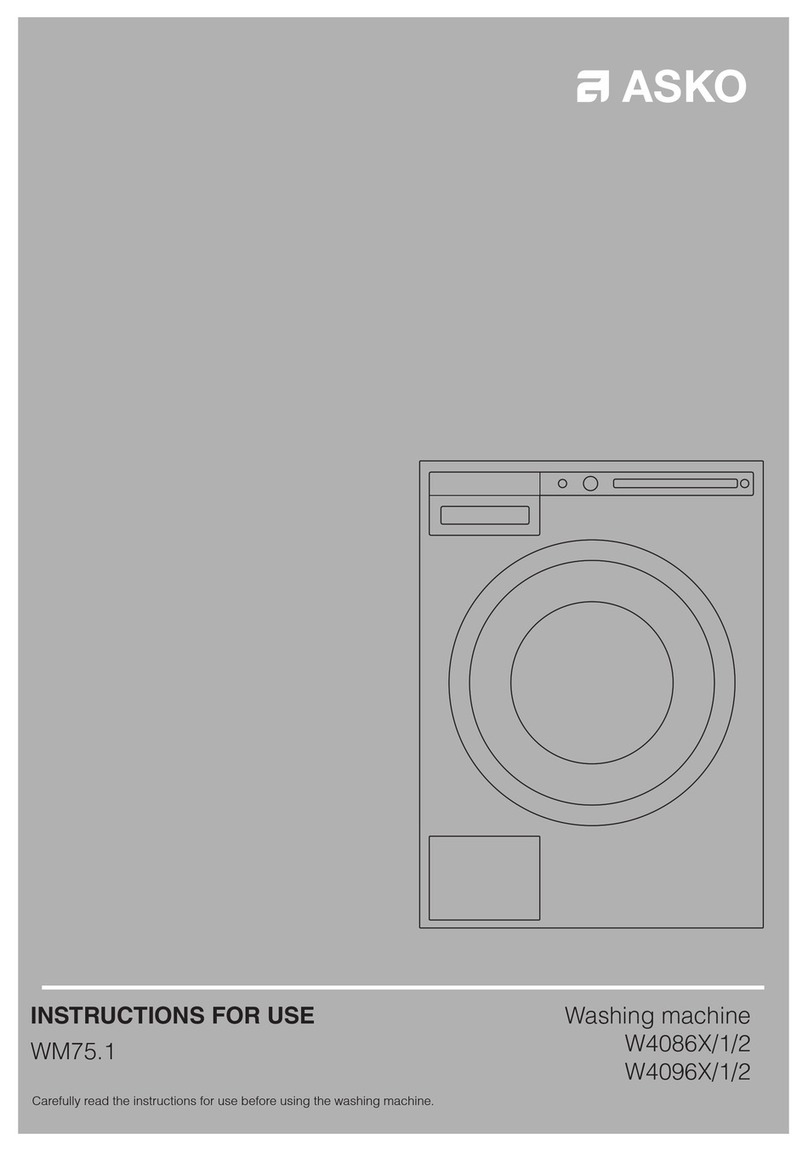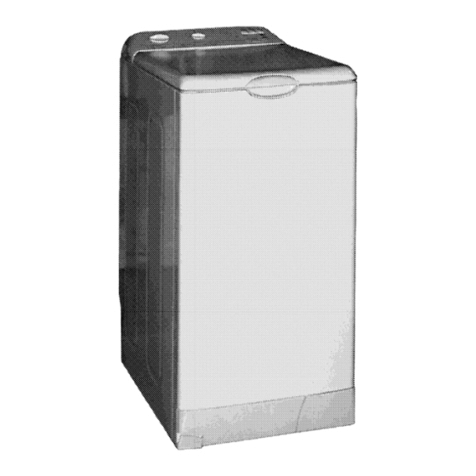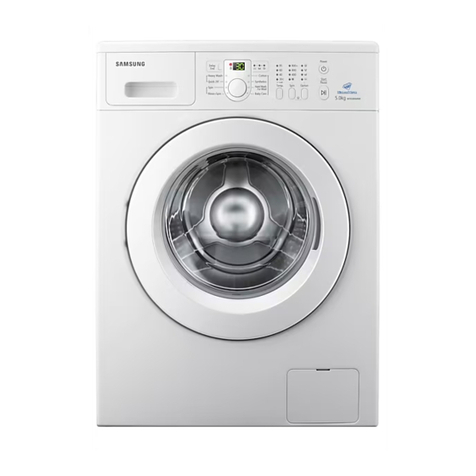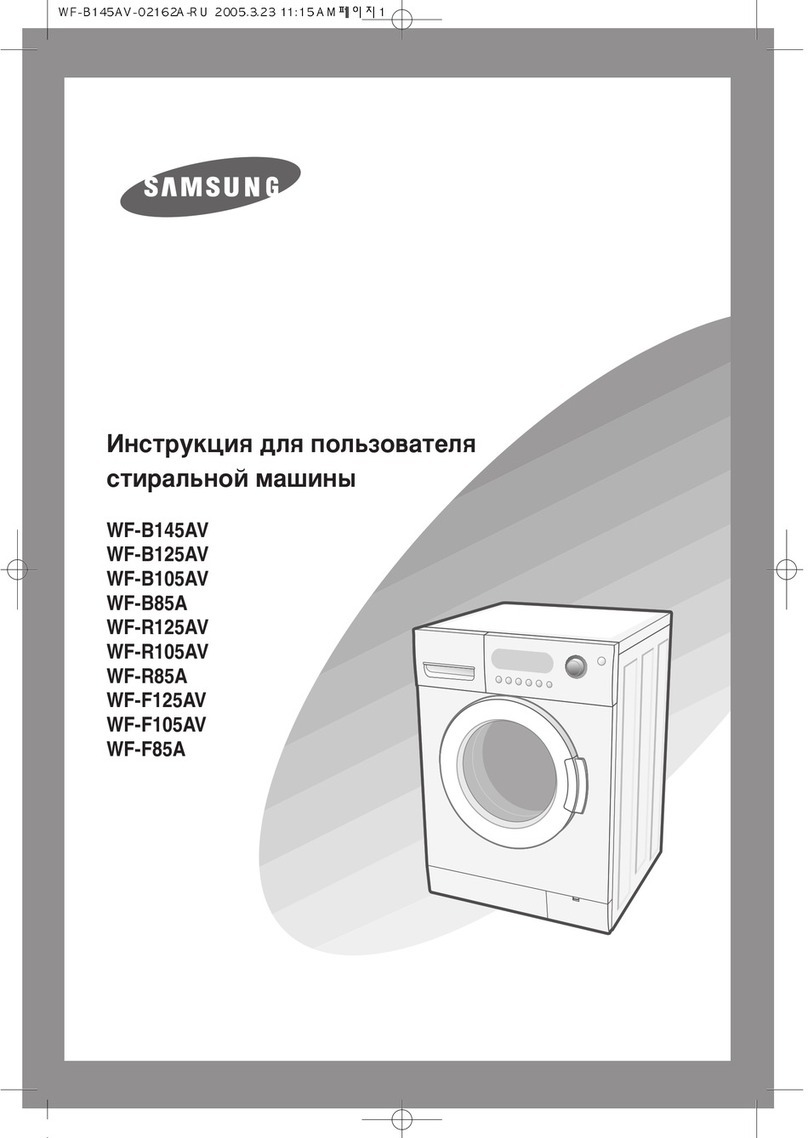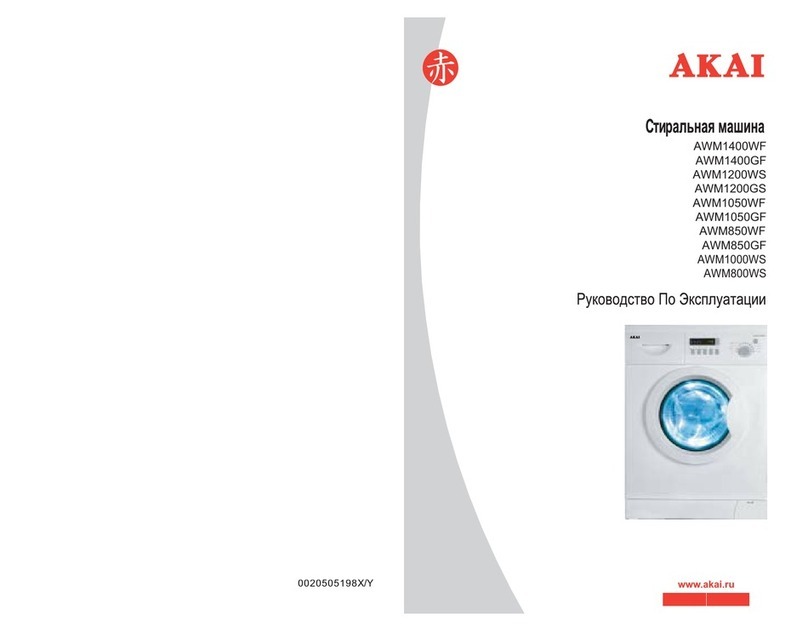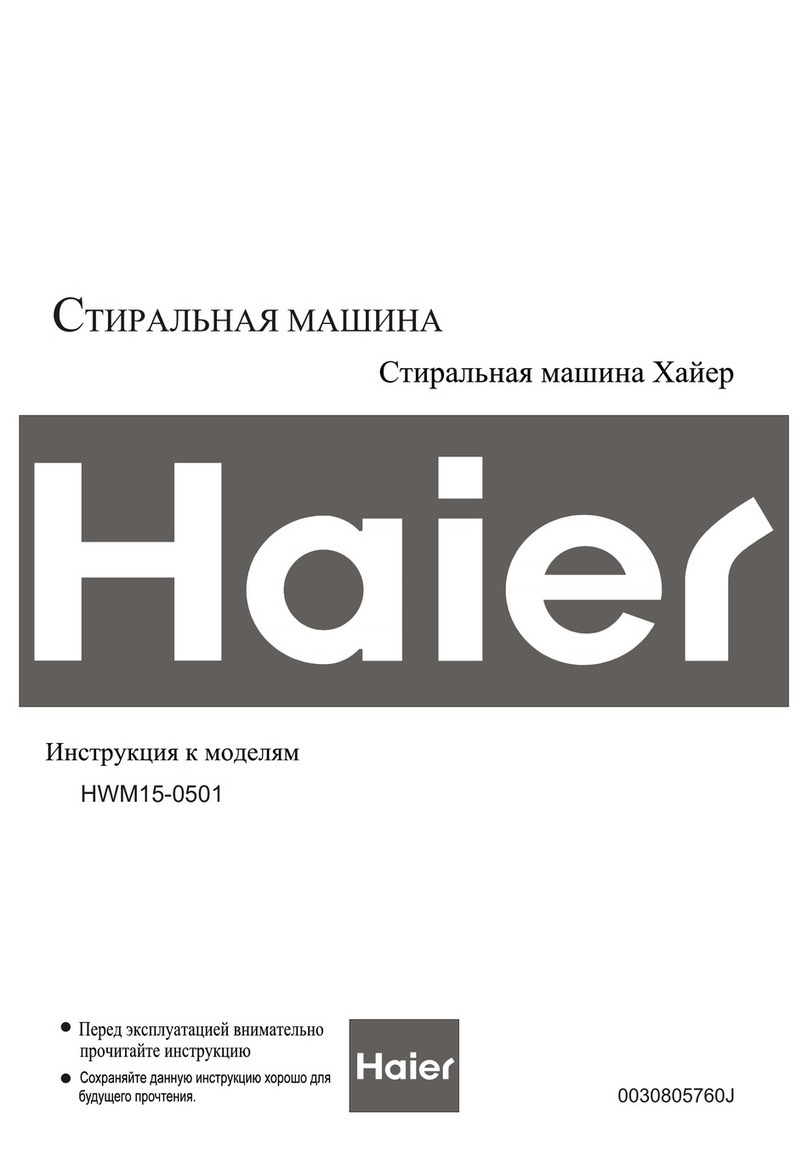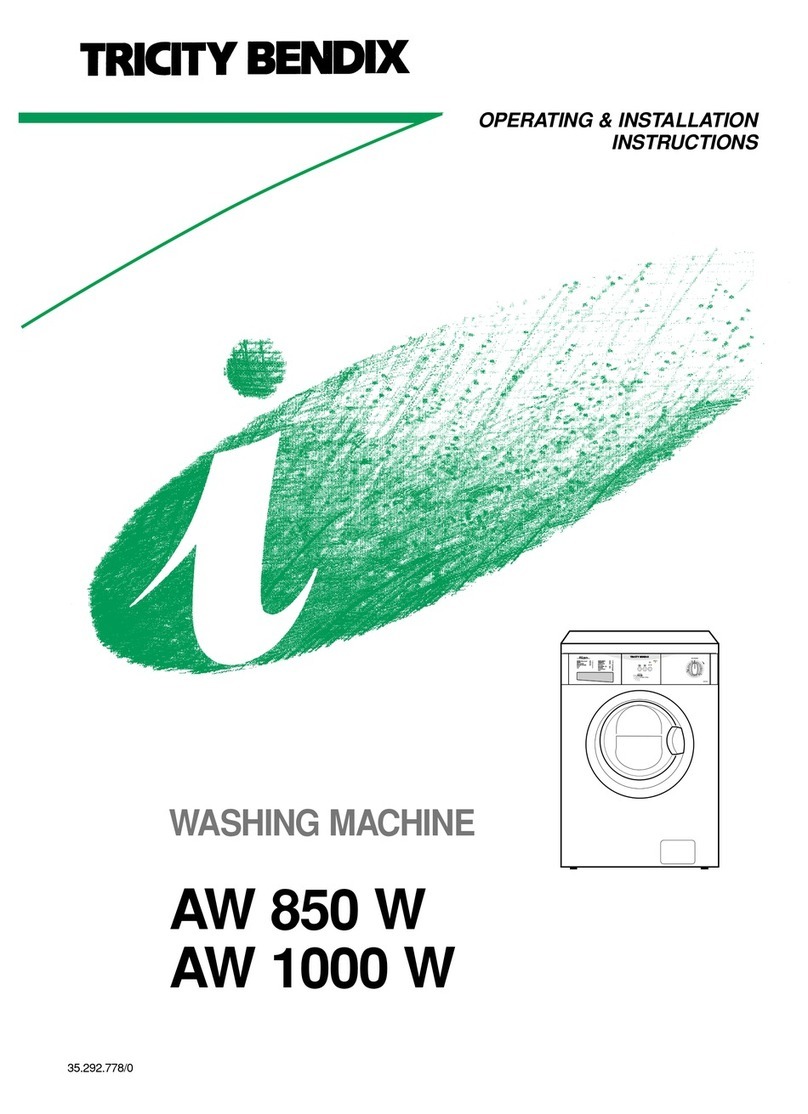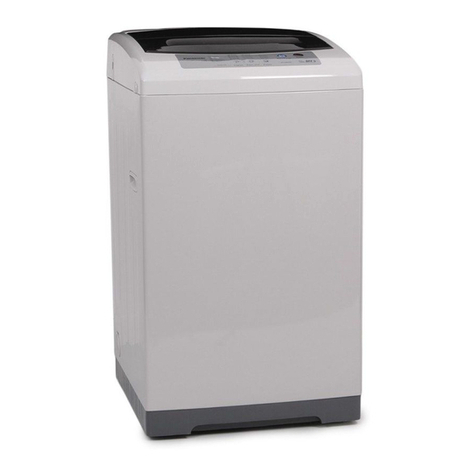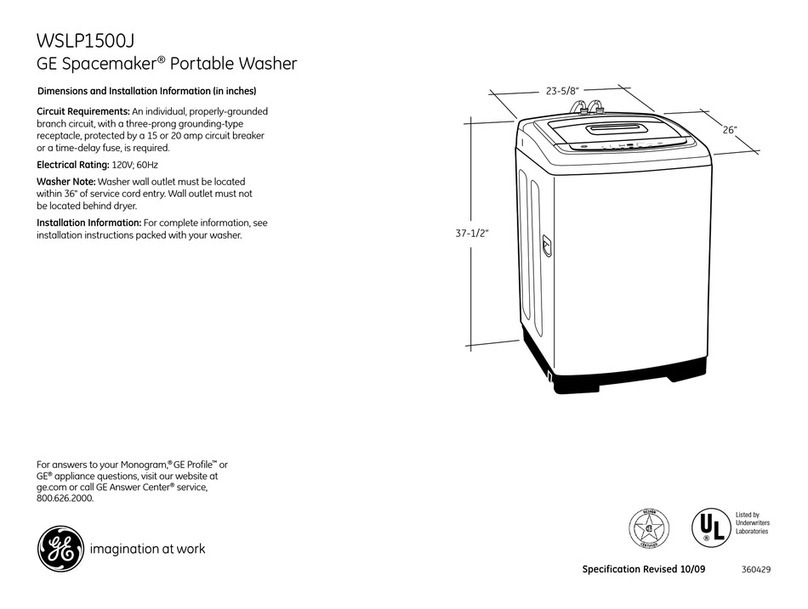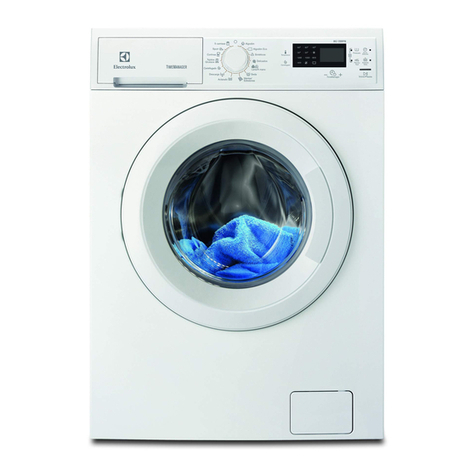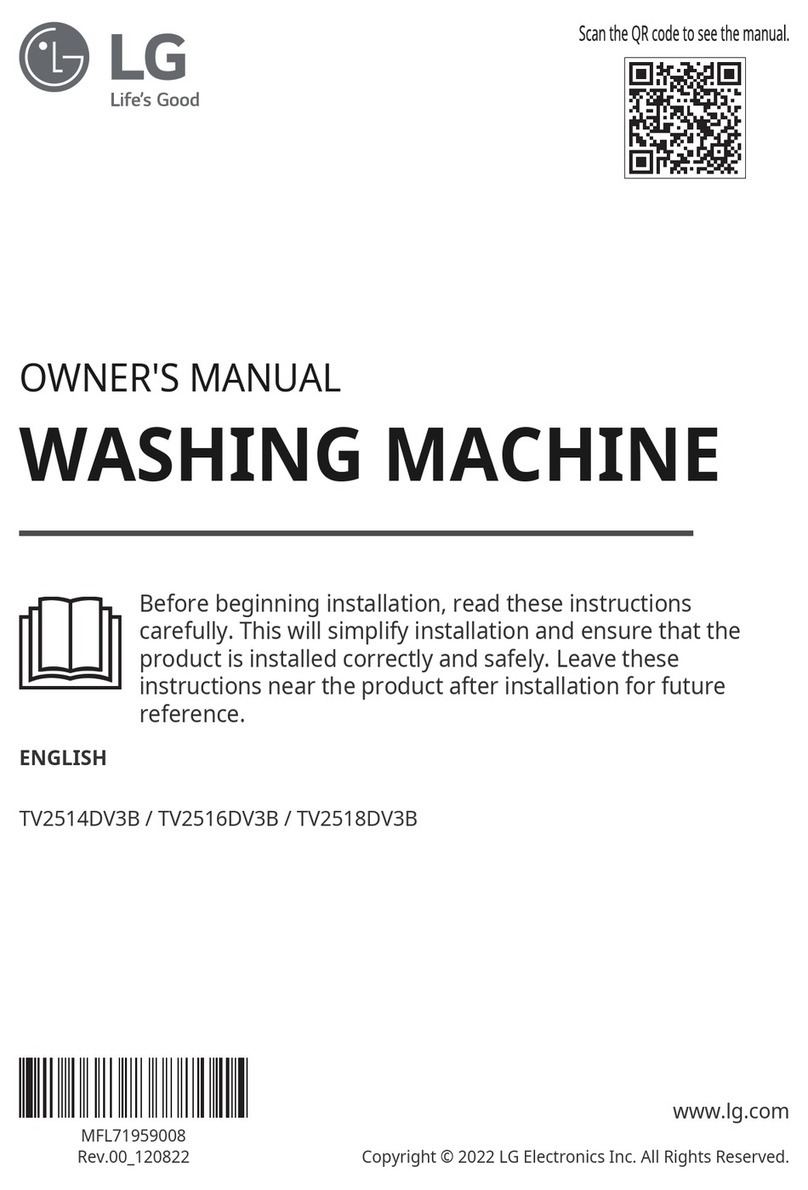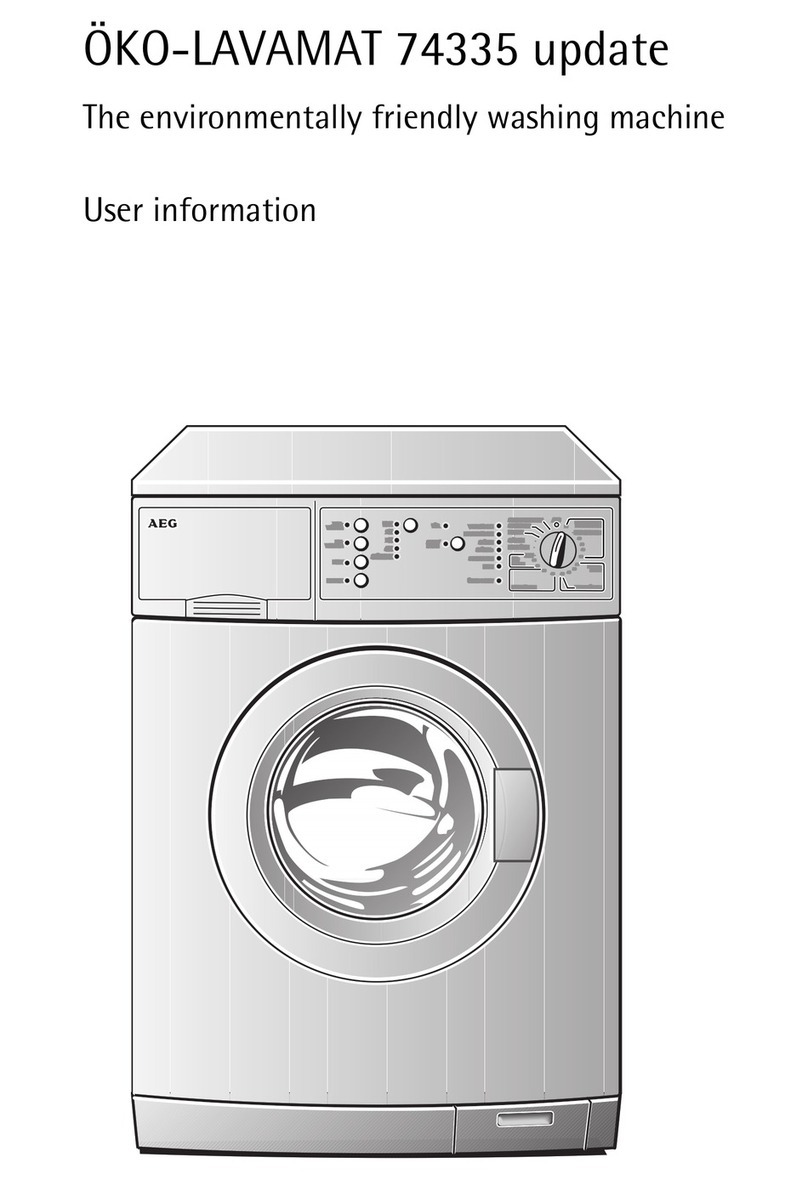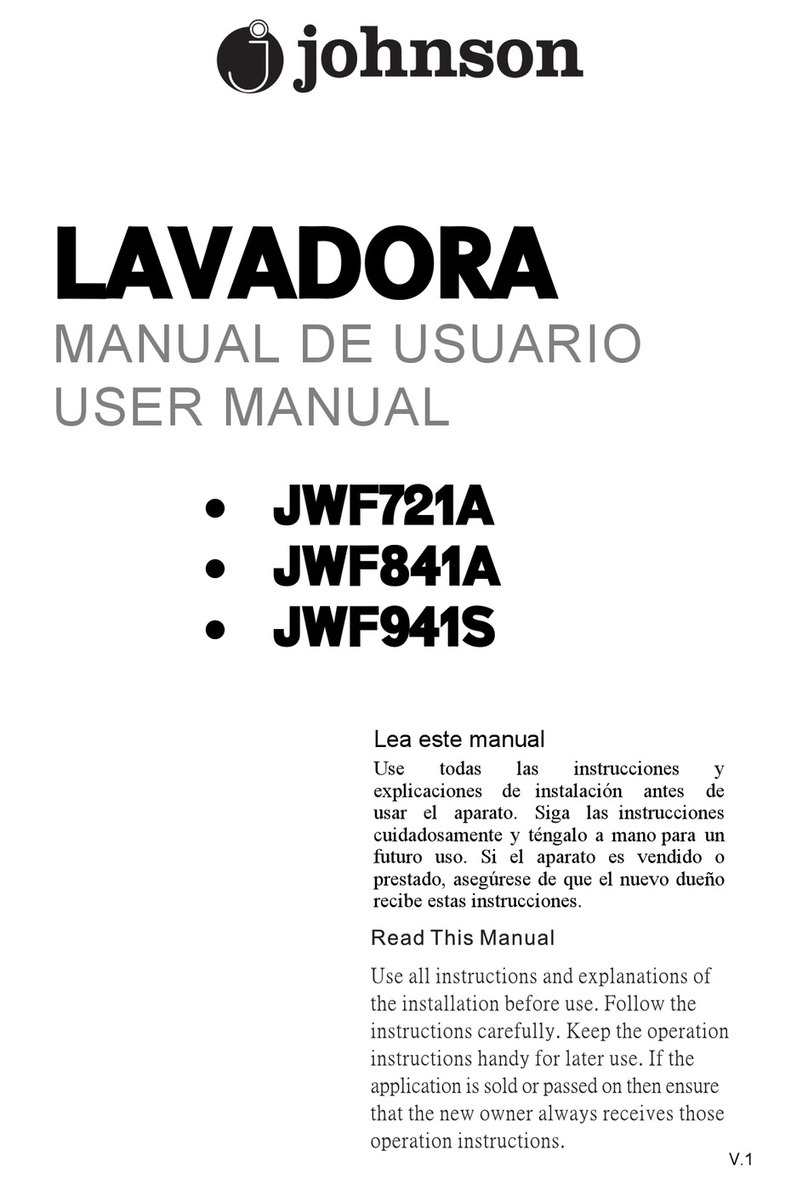
10
INSTALLATION AND CONNECTION
POSITIONING THE WASHING MACHINE
Read these instructions carefully and completely
before you install the machine. The installation
should be carried out by a qualified person who
is familiar with all local codes and ordinances for
electrical and plumbing connections.
Cosmetic damage must be reported to your dealer
within five days from the date of purchase. After
unpacking the washer, thoroughly check the unit for
cosmetic damage.
The washing machine can be installed as a built-
in (integrated) or a freestanding unit. Place the
machine on a level surface so that the power outlet
on the wall is accessible.
Before connecting the washing machine to the
power mains, wait for at least 2 hours until it reaches
room temperature.
If the appliance is installed on a plinth or a
similar structure, then the appliance must be fixed to
it, to avoid the risk of falling.
ASKO original accessories are available for this
purpose, complete with fixing instructions.
Grounding instructions
This appliance must be grounded. In the event of
malfunction or breakdown, grounding will reduce
the risk of electric shock by providing a path of
least resistance for electric current. This appliance
is equipped with a cord having an equipment-
grounding conductor and a grounding plug. The plug
must be plugged into an appropriate outlet that is
properly installed and grounded in accordance with
all local codes and ordinances.
Freestanding installation
The washer can be placed next to the dryer. It
is essential that the machine is leveled and the
locknuts are tightened to prevent excessive vibration
during spin cycles. Also be sure to leave a minimum
of ½" of space between the washer and the dryer.
The height adjustment for the washer is 35½" to
37½" (900 mm to 950 mm). Do not raise it higher
than 34½" (876 mm).
Improper connection of the equipment-
grounding conductor can result in a risk of electric
shock. Check with a qualified electrician or servicer
if you are in doubt as to whether the appliance is
properly grounded.
Do not modify the plug provided with the appliance.
If it will not fit the outlet, have a proper outlet installed
by a qualified electrician.
Clearances around the washing machine
min. 50 mm (2")
min. 50 mm (2")
min. 50 mm (2")

